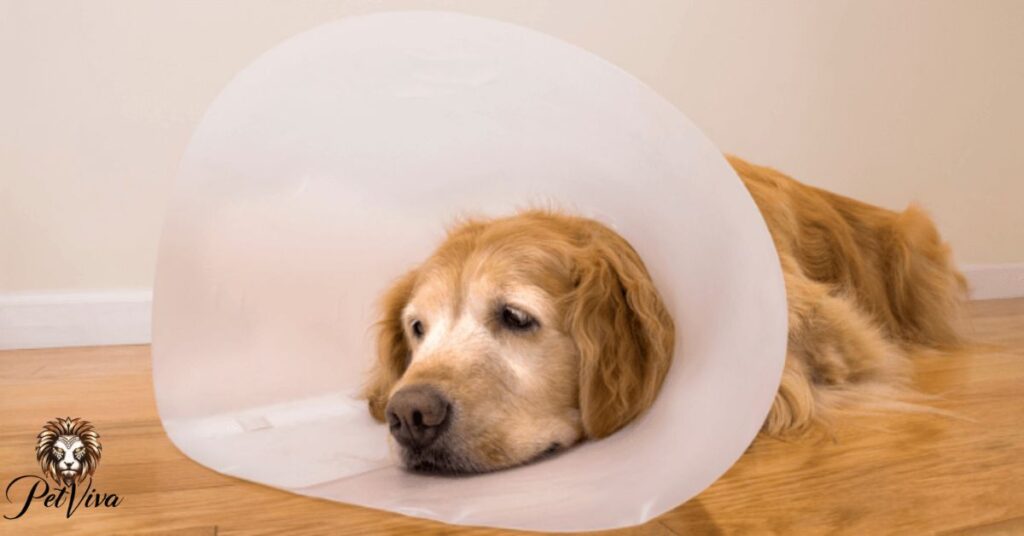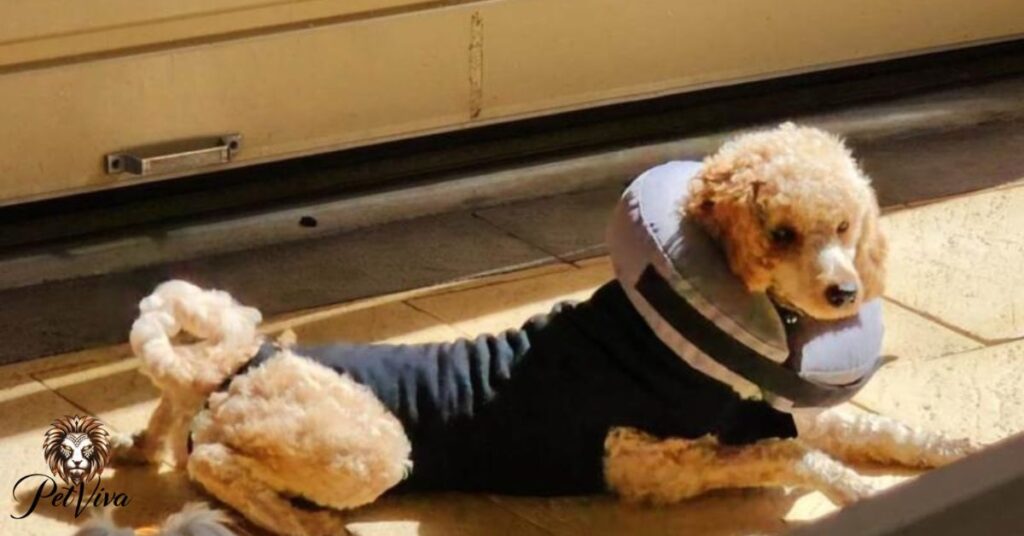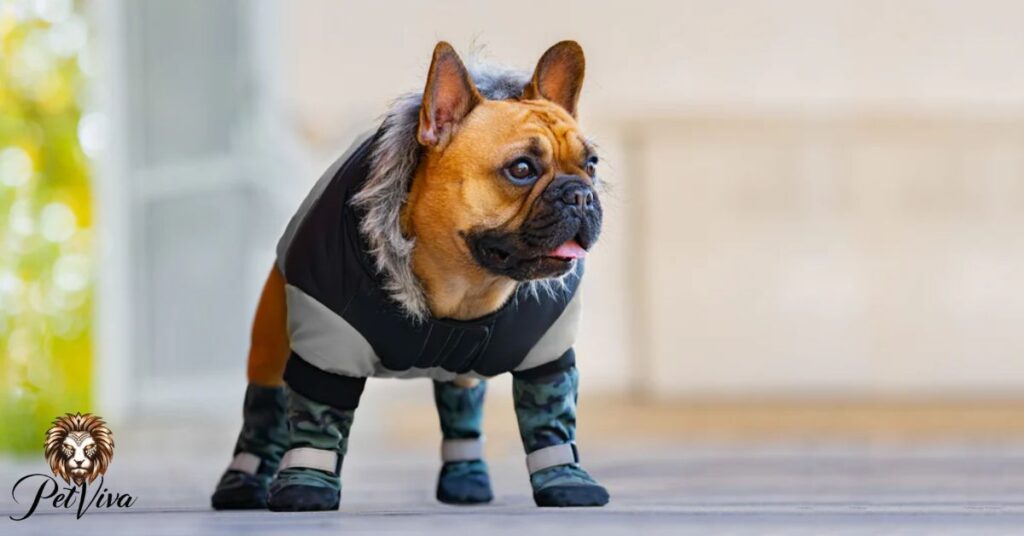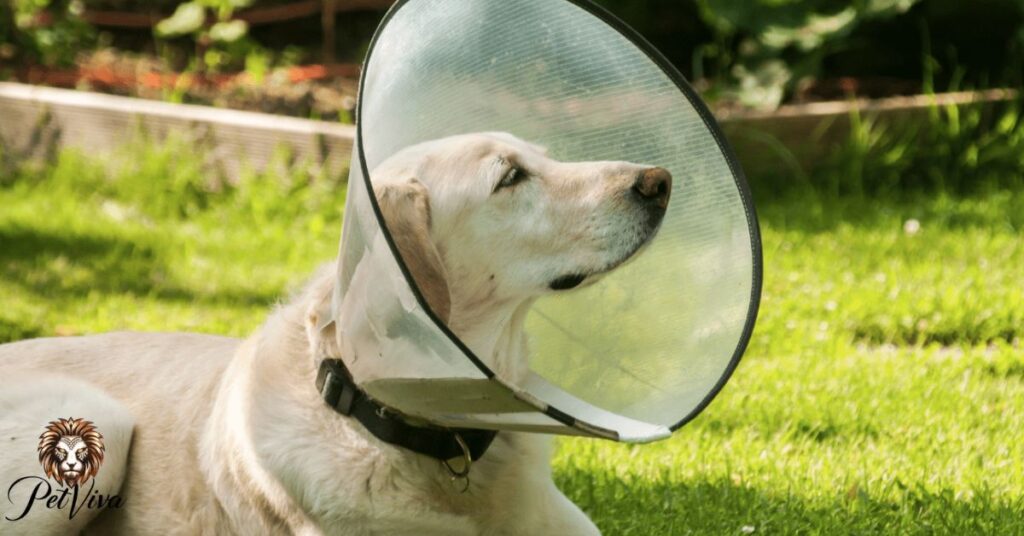Putting a cone on a dog involves gently securing a cone-shaped device around the dog’s neck to prevent them from licking, biting or scratching an injury or surgical site. It’s important to ensure the cone fits comfortably and allows the dog to eat, drink and move freely.
Ever wondered how to put a cone on a dog without causing distress? the art of gently securing the cone to keep your dog comfortable and safe. the step process to ensure your dog heals without aggravating wounds. Join us in mastering the art of cone application for your canine companion well-being
To put a cone on a dog gently place it over the dog’s head ensuring it fits comfortable around the neck. Fasten any straps or closures securely to prevent the cone from coming off.
Dog cone, inflatable collar, fabric collar, protective suit or boot?
When it comes to choosing between a dog cone inflatable collar, fabric collar protective suit, or boot several factors should be considered how to put a cone on a dog Dog cones also known as Elizabethan collars are effective for preventing dogs from licking or biting wounds but they can be cumbersome for some dogs.
Inflatable collars are a more comfortable alternative that still prevents access to wounds. Fabric collars provide a softer option suitable for dogs who find traditional cones uncomfortable. Protective suits or boots are ideal for covering large areas of the body offering protection while allowing more freedom of movement. Ultimately the choice depends on dog’s comfort the type of injury or surgery and your veterinarian’s recommend.
Also read this: HOW LONG DO FERRETS SLEEP
Plastic cone collars

Plastic cone collars, also known as Elizabethan collars or E-collars, are common used to prevent dogs from licking, scratching, or biting at wounds or surgical sites. These collars are types made of durable, lightweight plastic and come in various sizes to accommodate different breeds. The cone shape extends outward from the dog’s neck creating a barrier around the head to restrict access to the affected area.
While plastic cone collars are effective at preventing dogs from interfering with their wounds, some dogs may find them uncomfortable or restrictive. It’s essential to monitor your dog’s behavior and comfort level while wearing the collar. Plastic cone collars can hinder a dog’s ability to eat, drink or navigate comfortably, so it’s crucial to provide extra care and supervision during this time.
If your dog seems distressed or struggles to adapt to the plastic cone collar, consider alternative options such as inflatable collars or fabric wraps which may offer a comfortable and restrictive solution while still providing protection for the wound or injury.
Also read this: WHY SCHNAUZERS ARE THE WORST DOGS? 20 REASONS (2024)
Fabric cone collars
Fabric cone collars, also known as soft cones or recovery collars, offer a comfortable alternative to traditional plastic cone collars. Made from soft, flexible materials like fabric or foam these collars provide a gentler option for dogs recovering from surgery or dealing with wounds. The soft design allows for greater freedom of movement while still preventing the dog from accessing the affected area.
Unlike plastic cone collars, fabric cone collars are often machine washable and can be easily adjusted for a secure fit. Their lightweight and less bulky construction make them more comfortable for dogs to wear for extended periods. fabric cone collars come in various colors and patterns, allowing pet owners to choose a style that suits their dog’s personality.
However it’s essential to ensure that the fabric collar fits snugly enough to prevent the dog from reaching the wound while still allowing them to breathe and move comfortably. Regular monitoring is necessary to ensure that the collar remains in place and continues to effectively protect the healing area.
Inflatable collars

Unlike rigid plastic cones, inflatable collars allow dogs to eat, drink, and sleep more comfortably due to their softer and less obstructive design. They also offer better peripheral vision, enabling the dog to move around more freely without bumping into objects. inflatable collars are often adjustable and come in various sizes to accommodate different breeds and neck sizes.
It’s essential to monitor the dog closely while wearing an inflatable collar to ensure that it remains securely fastened and effectively prevents access to the affected area. Some dogs may still find ways to maneuver around the collar so provide alternative solutions if necessary.
Recovery suits
Recovery suits, also known as medical pet bodysuits, are garments designed to provide full-body coverage and protection for dogs during the healing process. These suits are typically made from soft, breathable fabric that offers comfort and flexibly while preventing the dog from accessing wounds, incisions, or surgical sites.
Unlike traditional cone collars, recovery suits offer comprehensive coverage, minimizing the risk of irritation or infection from licking or scratching. They come in various styles including ones with built-in sleeves or openings for attaching drainage tubes or catheters providing convenience for both the dog and the owner during recovery.
Recovery suits are especially beneficial for dogs who may have difficult adjusting to wearing a cone or have injuries or surgical wounds in hard-to-reach areas. They can be worn for extended periods allowing the dog to move around freely, sleep comfortably and maintain their normal activities while still receiving the necessary protection and support for healing.
Protective boots

Protective boots, also known as dog booties or paw protectors, are specialized footwear designed to safeguard a dog’s paws from injury, irritation, or adverse weather conditions. These boots typically feature durable materials such as rubber or neoprene, offering traction and insulation while shielding the paws from hot pavement, sharp objects, or abrasive surfaces.
These boots come in various styles and sizes to accommodate different breeds and paw shapes, ensuring a snug and comfortable fit for optimal protection. They are particularly useful for dogs engaging in outdoor activities like hiking, running or walking on rough terrain, as well as for dogs with sensitive or injured paws requiring extra care and support.
By providing a barrier between the dog’s paws and potential hazards, protective boots help prevent injuries, cuts, burns, promoting overall paw health and mobility. They are an essential accessory for pet owners who priorities their dog’s safety and well-being during outdoor adventures or everyday walks.
Can my dog sleep with a cone on?
your dog can sleep with a cone on, although it may initially feel uncomfortable or unfamiliar to them. It’s essential to ensure that the cone is properly fitted and not causing any discomfort or restriction of movement for your dog while they sleep. Some dogs may need some time to adjust to sleeping with a cone, so be patient and monitor their behavior to ensure they’re not excessive distress
To help your dog sleep comfortable with a cone on, you can provide a soft and padded bedding area where they can rest without feeling additional pressure on their neck or head. You may consider placing the cone on your dog only when necessary, such as during periods of unsupervised activity or when they’re likely to lick or chew on a wound.
Regularly check the dog’s cone for any signs of wear or damage, and ensure it’s kept clean to prevent any skin irritation or discomfort. If you notice any issues or if your dog seems excessively distressed while wearing the cone, consult with your veterinarian for advice on alternative options or adjustments to ensure the dog’s well-being during sleep.
My dog is frightened of their collar/recovery suit

If your dog is frightened of their collar or recovery suit, it’s essential to address their fears with patience and . Start by the collar or suit gradually, allowing your dog to sniff . Use positive reinforcement techniques, such as offering treats or praise, to associate the collar or suit with positive experiences.
can try desensitization exercises by gradually increasing the amount of time your dog wears the collar or suit while engaging in enjoyable activities, such as playing or receiving attention. This helps your dog build confidence and associate the collar or suit with positive experiences.
If your dog continues to show fear or discomfort, consult with a professional dog trainer They can provide valuable insights and techniques to help your dog overcome their fear and feel more comfortable wearing the collar
What can I use instead of a dog cone?
If your dog doesn’t tolerate a traditional cone well, several alternatives can provide similar protection without causing discomfort. One option is an inflatable collar, which resembles a neck pillow and prevents your dog from reaching their wounds. These collars are more comfortable for some dogs and allow them to eat, drink, and sleep more comfortably.
Another alternative is a fabric cone collar, which is softer and more flexible than plastic cones. Fabric cones provide a snug fit around your dog’s neck while still preventing them from accessing their wounds. They are machine washable and generally less bulky, making them a convenient option for some dogs.
You can also consider a protective suit or boot designed to cover the affected area. These garments provide full-body protection and prevent your dog from licking or scratching their wounds. However, it’s essential to ensure that any alternative you choose fits properly and effectively prevents your dog from interfering with their healing process.
Frequently asked question
Can dogs sleep with a cone on?
Dogs can sleep with a cone on, but it may be uncomfortable for them and disrupt their sleep patterns.
What can I use instead of a dog cone?
Instead of a dog cone, you can use inflatable collars, fabric collars, or recovery suits as alternatives.
How do you get a cone on a dog that bites?
To put a cone on a dog that bites, try using a soft muzzle or seek assistance from a veterinarian.
How do you make a homemade cone for a dog?
To make a homemade cone for a dog, you can use materials like cardboard, plastic bottles, or even a paper plate.
conculsion
Ensuring how to put a cone on a dog wears a cone properly is crucial for their well-being during recovery. By following simple techniques like positive reinforcement and gradual introduction, you can help your pet adjust to wearing a cone comfortably. Remember, patience and consistency are key in this process.
exploring alternative options such as inflatable collars or recovery suits can provide your dog with more comfort while still preventing them from licking or biting wounds. Ultimately the goal is to priorities your dog’s comfort and safety while facilitating their healing process. With the right approach and understanding, you can effectively put a cone on your dog and ensure they recover smoothly without unnecessary stress or discomfort







